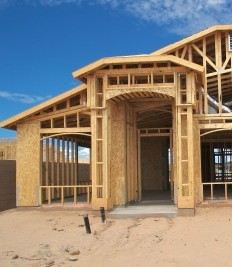 Are you starting to tire of paying your monthly rent to someone and never building any equity? Renting forever can be a significant pain, especially as you’re contributing to someone else’s financial well-being. The good news is that there are affordable real estate options out there for those investing in their first home. Below we will share a few excellent reasons why an apartment or condo might be the best choice for a first-time home buyer.
Are you starting to tire of paying your monthly rent to someone and never building any equity? Renting forever can be a significant pain, especially as you’re contributing to someone else’s financial well-being. The good news is that there are affordable real estate options out there for those investing in their first home. Below we will share a few excellent reasons why an apartment or condo might be the best choice for a first-time home buyer.
A Manageable Monthly Payment
In most markets across the country, condos and apartments are available at a significantly lower cost than a full-sized house. Buying a less-expensive home means that your monthly mortgage payments will, in turn, be lower. If you are single or a young professional trying to start a family, that extra money can be a massive boost to your monthly budget.
Note that while your monthly mortgage payment may be lower, you are still responsible for other maintenance and upkeep fees. The most common is known as a homeowners’ association fee, to which all condo owners in the same development contribute. These funds are used to upkeep the building or property as well as things like landscaping, a pool or gym, and other amenities.
A Smaller Down Payment
In the same vein, buying a less-expensive home also means that you can put a smaller down payment on it when you close the sale. In many cases you are required to place a certain percentage – typically 20 percent – down to avoid having to purchase private mortgage insurance. Having to commit less in your down payment leaves more money in the bank for other purposes.
An Excellent Future Investment Property
Don’t forget that when you are ready to upgrade and move into a larger house, you can keep a condo as a rental or investment property. Once your mortgage is paid off, you are only responsible for the monthly maintenance fees and taxes. So if you can rent the condo out to a tenant, you will have an excellent source of cash flow that can help to pay for your new home or fund other activities.
The above are just a few of the many reasons why a condo can be a great starter home for first-time buyers. To learn more about your mortgage options, contact us today. We are happy to help.
 The National Association of Home Builders’ Housing Market Index for November showed builders’ growing concerns over U.S. housing market conditions. November’s index reading dropped five points to 33 as compared to October’s reading of 38 and the November 2021 reading of 83. November’s home builder index reading was the lowest reading since June 2012 except during the pandemic. Readings over 50 indicate that most home builders were positive about housing market conditions.
The National Association of Home Builders’ Housing Market Index for November showed builders’ growing concerns over U.S. housing market conditions. November’s index reading dropped five points to 33 as compared to October’s reading of 38 and the November 2021 reading of 83. November’s home builder index reading was the lowest reading since June 2012 except during the pandemic. Readings over 50 indicate that most home builders were positive about housing market conditions. As you get closer to your retirement age, you should try to discharge as much of your debt as possible. Unfortunately, many people close to the age of retirement still have a significant mortgage balance they need to pay off. What are some of the top reasons why you should pay off your mortgage before you retire?
As you get closer to your retirement age, you should try to discharge as much of your debt as possible. Unfortunately, many people close to the age of retirement still have a significant mortgage balance they need to pay off. What are some of the top reasons why you should pay off your mortgage before you retire? You have worked hard for your money, and you probably want to save as much of it as you possibly can. That means you need to find the best possible mortgage deal you can. What are a few steps you should take if you want to get the best loan terms possible?
You have worked hard for your money, and you probably want to save as much of it as you possibly can. That means you need to find the best possible mortgage deal you can. What are a few steps you should take if you want to get the best loan terms possible? Last week’s scheduled economic news included readings on monthly and year-over-year inflation and the University of Michigan’s preliminary reading on consumer sentiment. Weekly readings on mortgage rates and jobless claims were also released.
Last week’s scheduled economic news included readings on monthly and year-over-year inflation and the University of Michigan’s preliminary reading on consumer sentiment. Weekly readings on mortgage rates and jobless claims were also released. U.S. military veterans have opportunities to enjoy some richly-deserved benefits in other aspects of their lives, including some special options for financing their homes. VA loans may give active military personnel, retired veterans, and sometimes surviving family members of veterans the ability to purchase homes that might not prove available to them through more conventional mortgage loans.
U.S. military veterans have opportunities to enjoy some richly-deserved benefits in other aspects of their lives, including some special options for financing their homes. VA loans may give active military personnel, retired veterans, and sometimes surviving family members of veterans the ability to purchase homes that might not prove available to them through more conventional mortgage loans.